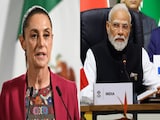In a major ruling, the Supreme Court this week upheld the validity of Uttar Pradesh Madrasa Law. The 2004 law regulates the functioning of these educational institutions in the state. The top court set aside an Allahabad High Court order that said madrasas violated the constitutional tenet of secularism, and directed that all their students be moved to conventional schools. But how do these madrasas operate and what can be the potential implications of this verdict? Here's a look at some of these key points.
What are madrasas?
These are the educational institutions originally created for the study of Islam, though this may not be the only subject taught there currently. The early madrasas developed out of occasional lectures delivered at mosques. In due course of time, they became the formal centre of learning as permanent institutions.
Literature, mathematics, logic, and, in some cases, natural science are studied in madrasas in addition to Islamic theology and law.
According to data presented by the Union government in Parliament on February 3, 2020, India has a total of 24,010 madrasas. These include 11,621 recognised and 2,907 unrecognised madrasas.
What was the case?
The Allahabad High Court, on March 22, had struck down the Uttar Pradesh Board of Madrasa Education Act 2004, saying it violates principles of secularism - a facet of basic structure of the Constitution.
The state government had supported the law in the high court. However, it did not file any appeal against the verdict.
The Uttar Pradesh Board of Madrasa Education Act 2004 regulates madrasas in terms of curriculum, standard of education, conduct of examinations and qualifications for teaching.
What the Supreme Court said in its verdict?
A bench Chief Justice of India DY Chandrachud, and Justices JB Pardiwala and Manoj Misra, upheld the constitutional validity of the UP act, saying a law can be struck for violation of fundamental rights under part III of the Constitution or on grounds of legislative competence but not for violation of basic structure.
During the hearing of the case, the Supreme Court had described India as a "melting pot of cultures, civilisations and religions" and stressed on taking steps to preserve it.
"The act is consistent with the positive obligation of the state to ensure that the children get adequate education," Chief Justice DY Chandrachud said in court.
The bench, however, found the UP Madrasa act unconstitutional to the extent that it regulates higher education in relation to 'Fazil' and 'Kamil,' conflicting with the University Grants Commission (UGC) Act.
(With inputs from agencies)





